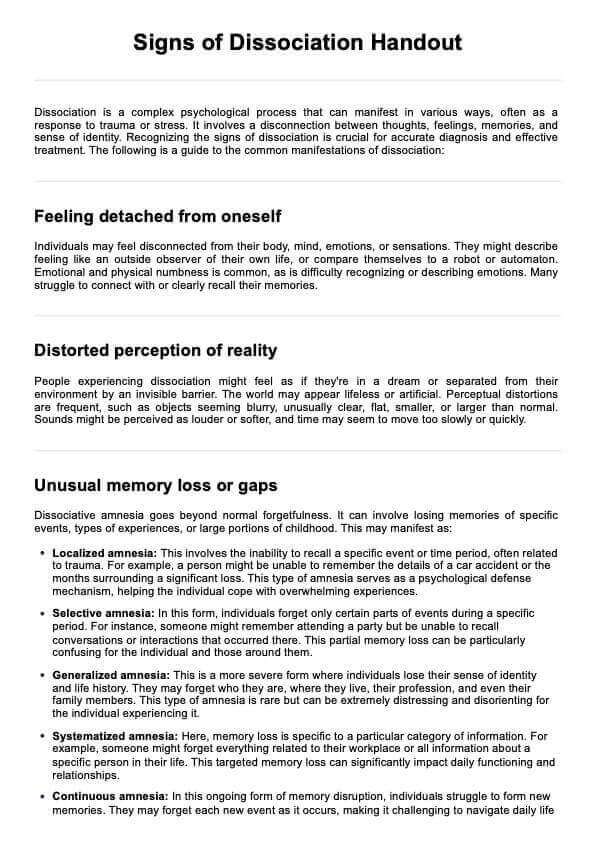Dissociation is often a response to severe trauma, such as emotional abuse or a traumatic event. It's a coping mechanism that helps individuals disconnect from painful experiences.

Signs of Dissociation Handout
Explore key signs of dissociation to better manage and treat dissociative disorders in clients.
Use Template
Signs of Dissociation Handout Template
Commonly asked questions
Diagnosis typically involves a comprehensive assessment by a mental health specialist. This includes interviews, psychological evaluations, and consideration of the individual's history and symptoms.
Yes, dissociative disorders can be treated. Treatment often includes psychotherapy, medication, and support from mental health professionals. Early intervention and continuous support are crucial for effective management.
EHR and practice management software
Get started for free
*No credit card required
Free
$0/usd
Unlimited clients
Telehealth
1GB of storage
Client portal text
Automated billing and online payments











